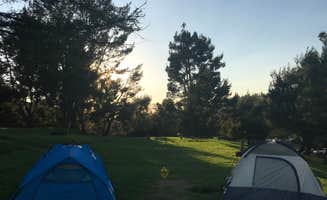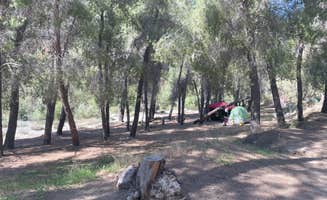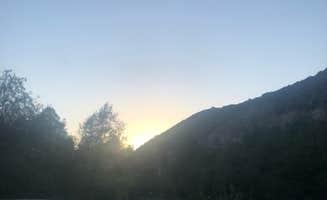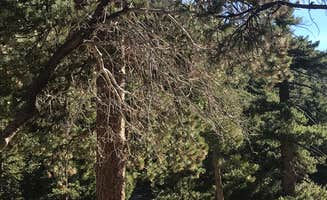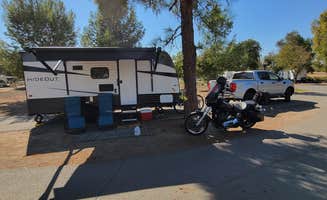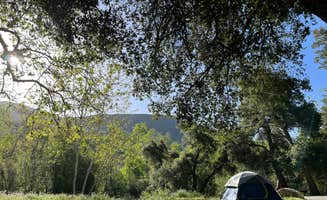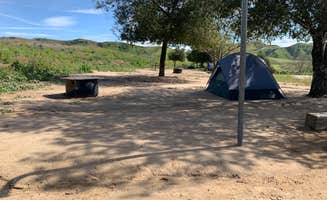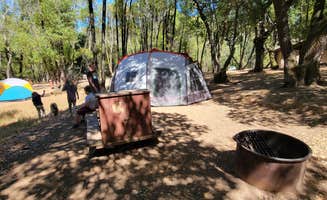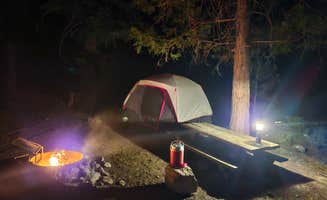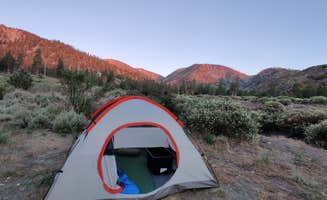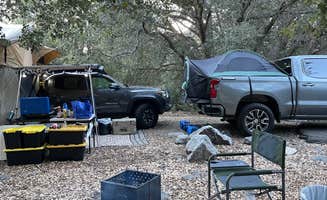Camping sites near Claremont, California range from 6,000-foot pine-covered mountain retreats to urban-adjacent parks with lake access. Most campgrounds in the Angeles National Forest operate seasonally due to winter snow at higher elevations. Unlike coastal camping areas, the inland location experiences warmer summer temperatures, with daytime highs regularly exceeding 90°F from June through September.
What to do
Hiking trail access: At Crystal Lake Rec Area Campground, numerous trails start directly from the campground. "There are several hiking trails here that are well used and well maintained. This is a great campground near the city," notes Robert A. The trail network accommodates various skill levels, from short nature walks to extended backcountry routes.
Fishing opportunities: Bonita Ranch Campground provides access to Lytle Creek, which runs directly behind the camping area. While not primarily for fishing, the creek offers a refreshing spot to cool off. "The creek running behind the camp is great to explore, and a waterfall is a short hike away," reports Jonathan G., who also mentioned finding berries in August during his visit.
Wildlife observation: The Angeles National Forest campgrounds offer considerable wildlife viewing opportunities. At Coldbrook Campground, one camper reported seeing "black bear, deer (wandered through our site), red foxes, Stellar's Jays, woodpeckers, other birds." Morning hours typically yield the best wildlife sightings, especially around campground peripheries.
What campers like
Accessibility from urban areas: Prado Regional Park offers camping within minutes of urban amenities while maintaining natural surroundings. "Perfect to get out of the city but still be in it. Campgrounds have more than enough privacy with each one being about 15 to 20 yards apart," writes Troy A. The quick access makes these locations ideal for weekend getaways without extensive travel time.
Temperature relief: The mountain campgrounds provide significant temperature drops compared to valley locations. Table Mountain Campground sits at over 6,000 feet elevation, creating cooler summer conditions. "Gorgeous campground to be visited during wildflower season," notes Melanie G. Evening temperatures can drop 20-30 degrees from daytime highs, even during summer months.
Diverse camping options: From primitive sites to full-service campgrounds, the area accommodates various camping preferences. "We chose site 41 as a first come first serve site. It was in the main road in/out so we had some traffic. They have several pit toilets throughout the campground. Not fancy but they do the job," explains Troy L. about his Table Mountain experience.
What you should know
Fire restrictions: Fire regulations change frequently throughout the year. One Coldbrook Campground visitor noted, "We camped during a no fire period so no campfires or outdoor propane gas stove fires. We sat in the darkness and took in the stars with the sound of the creek below us." Always check current fire restrictions before your trip, as they may prohibit all flame sources including camp stoves.
First-come availability: Many Angeles National Forest campgrounds operate on a first-come basis with no reservations. "We left LA (Hollywood) on a Friday afternoon around 3, and were setting up camp by 5! Luckily a friend got to the campground before us though, as he snagged the last of the 20 or so sites there," reports a Coldbrook visitor. Thursday arrival dramatically improves site selection chances during peak season.
Insect considerations: Mountain campgrounds experience seasonal insect activity. At Coldbrook Campground, campers report: "Lots of gnats! They swarm your face but then after you sit still for about a minute they leave you alone... The little gnats seemed to crawl into my clothing and wiggle/possibly bite which was a nuisance." Insect repellent is essential during warmer months.
Tips for camping with families
Child-friendly amenities: Several campgrounds offer specific facilities for children. At Prado Regional Park, one camper mentioned, "Playground and splash pad kept the youngins entertained." These features provide entertainment options beyond hiking and traditional camping activities.
Bear safety education: Forest campgrounds require proper food storage due to bear activity. Campers at Manker Campground wish "there had been bear boxes at the sites other than the ones for refuse." Using this situation as a teaching opportunity helps children understand wildlife safety protocols.
Creek access considerations: While creeks provide natural play areas, supervision is essential. A Bonita Ranch visitor explains, "You're literally a box throw away from the creek if you're not really big on hiking but enjoy the scenery this would probably be a good way for you to experience the outdoors in the creek." Morning hours typically offer warmer water temperatures.
Tips from RVers
Size restrictions: Mountain roads limit RV access at many campgrounds. At Rolling M. Ranch Campground, a camper cautions: "We drove up in our 26ft motorhome and while we made it, I'm not sure that I'd want to make that drive again. It's very narrow and winding, single lane at times, lots of traffic." Angeles Forest campgrounds generally accommodate smaller RVs under 24 feet better than larger models.
Electric and water availability: Amenities vary significantly between campgrounds. At Bonita Ranch Campground, "Full hookups" are available according to one camper, while many forest locations offer no hookups. RVers should verify specific site utilities when booking, as some campgrounds may advertise hookups available at only certain sites.
Solar considerations: Mountain campgrounds often have significant tree cover affecting solar panel efficiency. One visitor to Rolling M. Ranch notes: "There's no hookups at any of the campsites so come prepared with your solar power and you'll have more than you need in this sunny part of the world." Eastern-facing sites typically receive better morning sun for solar charging.


